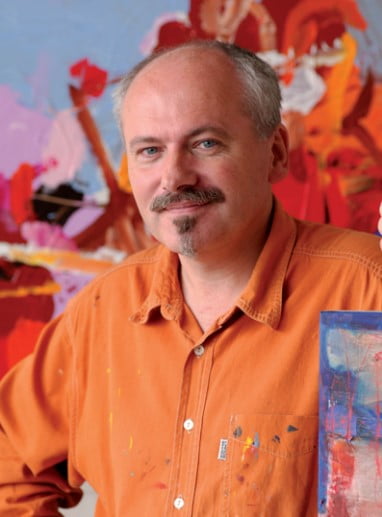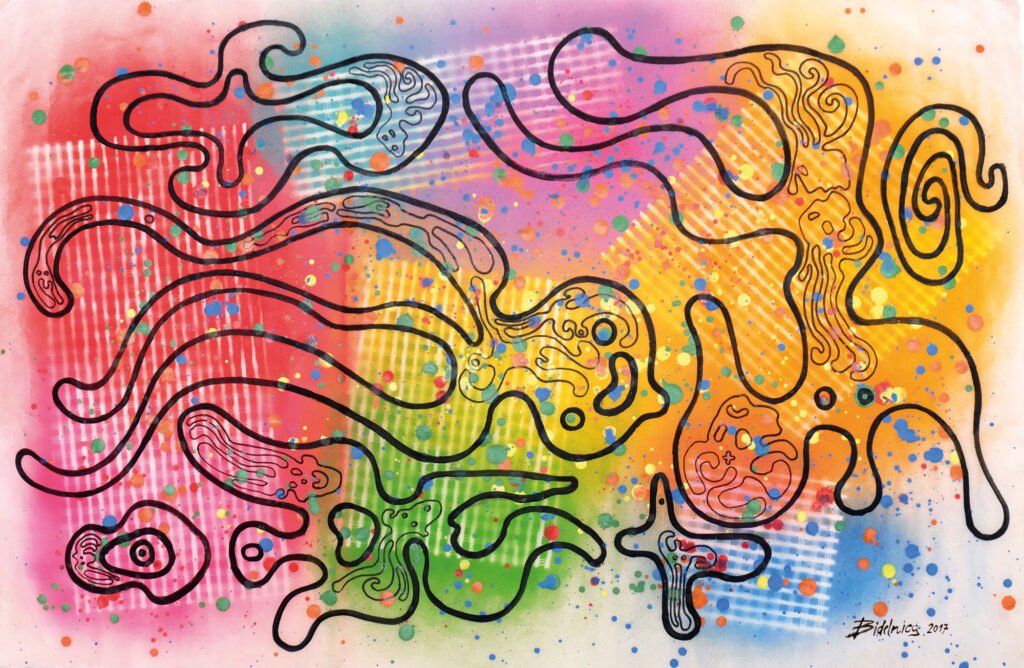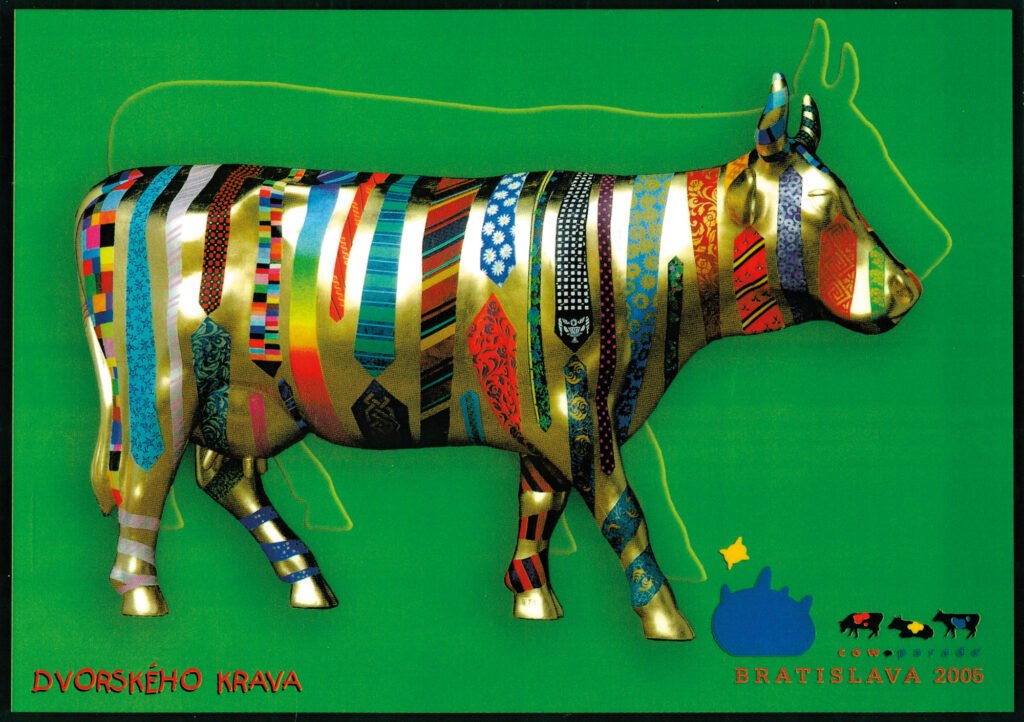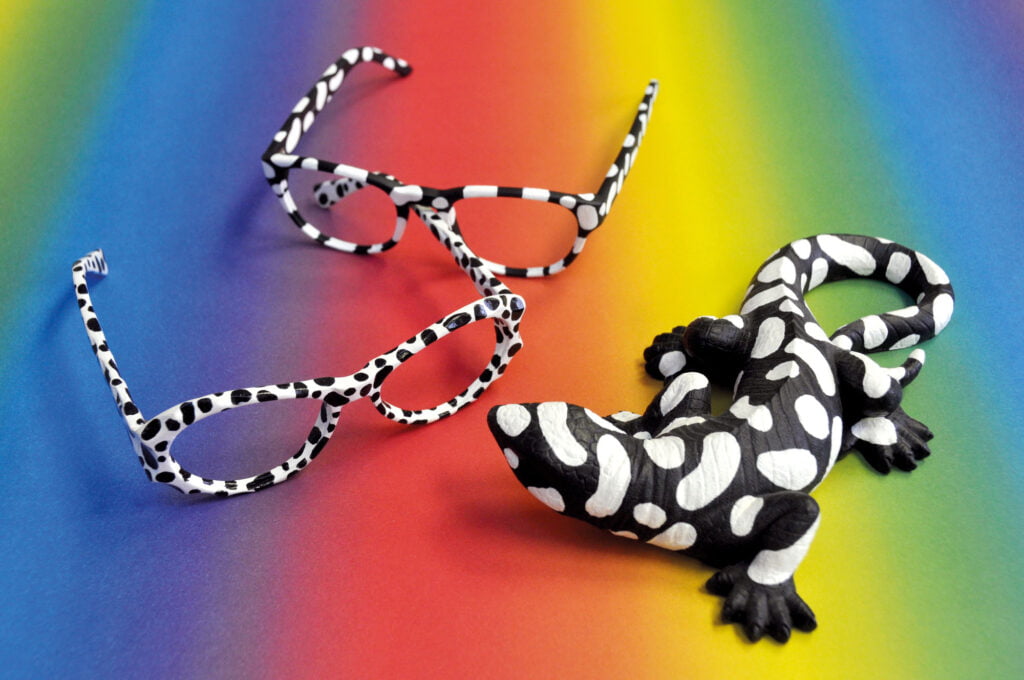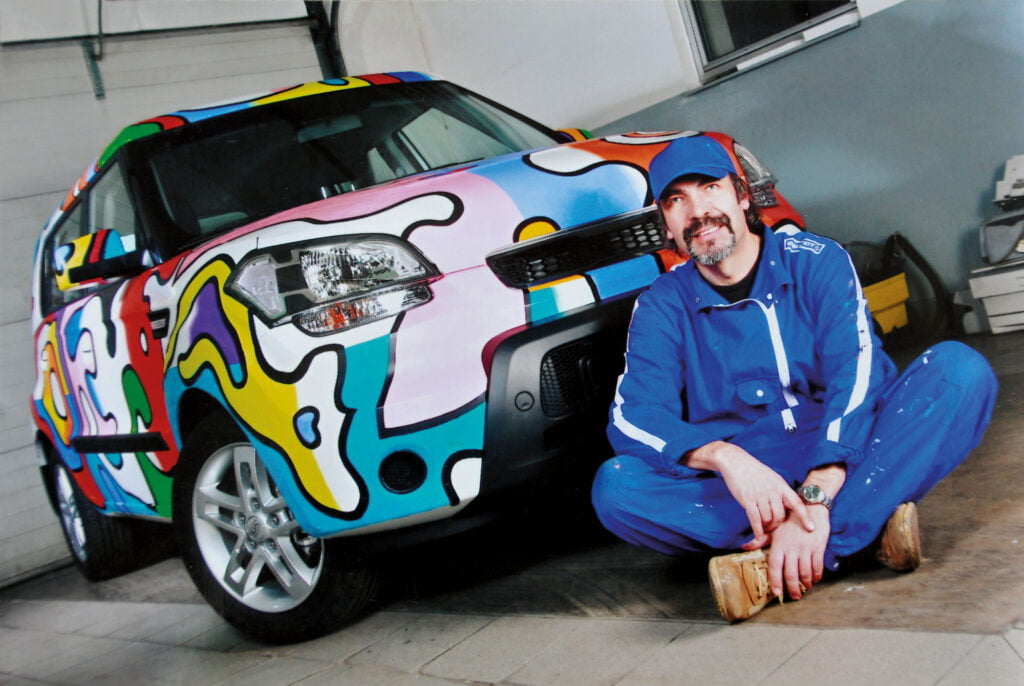Simone Jurčová o Danielovi Bidelnicovi

Tvorba Daniela Bidelnicu prechádza viacerými vývojovými etapami. Celou jej líniou sa ťahá niečo pre jeho obrazy tak typické, čo zjednodušene môžeme nazvať prosto KONTRAST. Už v počiatkoch (v študentských prácach a v období po ukončení VŠVU) sa snaží realistické stvárnenie skutočnosti nabiť moderným obsahom vyjadrenia – kontrastom myšlienky. Obdobie na začiatku deväťdesiatych rokov je obratom od realizmu k úplnej farebnej geometrickej abstrakcii. Cítiť z nej nadšenie z pestrofarebnosti a optimizmus. Je to etapa objavenia dekoratívnosti umeleckej tvorby, s radosťou môcť pomaľovať všetko naokolo, keď namiesto maliarskeho plátna používal predmety okolo nás. Dokumentovali to najmä výstavy v Nitrianskej štátnej galérii v roku 1991 a v Západoslovenskom múzeu v Trnave v roku 1992. Postupom času sa vracia k realizmu na obraze, ale berie ho iba ako sivý nevýrazný podklad – pozadie, cez ktorý premieta prvoplánovú a výrazne protikladnú modernú abstrakciu – tvarovú aj farebnú. V týchto maľbách využíva renesančnú kresbu očí a tváre, avšak dôležitosť výpovede kladie na moderný kontrast – výtvarný akcent v popredí. V súvislosti s historickými inšpiráciami a návratmi v Bidelnicovej tvorbe zaujíma dôležité miesto cyklus parafráz na Caravaggia, portrétistu z prelomu 16. a 17. storočia. Autor však zásadne mení farebnosť – odtiene modrej, morskej zelene a fialovej sú výrazné a jedovaté. Menia sa tiež atribúty slávnych obrazov. Bakchus s kokakolou, chlapcov kôš ovocia nahradia kancelárske šanóny a lutnista hrá na syntetizátor. Narcis márne hľadí do rozbitého zrkadla a chlapec, ktorého poštípala jašterica, má v ruke moderný magnetofón. V maľbách sa strieda výborne zvládnutá dobová citácia s ironickým zveličením modernej doby, podčiarknutá zmenou farebnosti. Teda opäť dominuje imanentný protipól vo viacerých úrovniach. Autor bol inšpirovaný dlhším pobytom v Ríme, kde istý čas študovala jeho manželka. Obdobný cyklus 12 parafráz na antické a renesančné sochárske diela pod názvom Ad Revidendum 2000 vznikol už v polovici osemdesiatych rokov a mal na tú dobu veľmi progresívny ekologický podtext. Akrylová podmaľba známych antických reliéfov je deštruovaná kresbovými zásahmi farebným pastelom, s náznakom civilizačnej deštrukcie pôvodnej harmónie. V ostatných rokoch sa tvorba Daniela Bidelnicu opäť prinavrátila k abstraktnému vyjadreniu obohatenému o karibské inšpirácie a očarenia získané viacerými návštevami krajín Strednej a Južnej Ameriky. Línia dúhového spektra sa nesie ďalej jeho tvorbou, cez konkrétne symboly, mexickú a brazílsku ornamentiku až po najnovšie neo-(p)op-artovské obrazy. Od zložitejších výtvarných výpovedí – nositeľov komplikovanejších posolstiev prechádza ku skratke a jednoduchosti v symboloch. Využíva polaritu tvaru na pokojnej ploche a symptomatický farebný kontrast. Umelcove obrazy sú poslami dobrej nálady a hravosti. Dodávajú mi energiu a jeho dekoratívnejšie maľby by som si dokázala predstaviť aj na modeloch letnej kolekcie niektorého módneho návrhára (podobne ako v šesťdesiatych rokoch 20. storočia), aby sa ním šírený optimizmus dostal nielen k návštevníkom výstavných siení, ale priamo na ulicu, medzi ľudí. Nehovoriac o tom, že by to opäť bol kontrast k obrazu ako k médiu maliarskeho vyjadrenia.
Simone Jurčová
Teoretička umenia
Simone Jurčová
Art Theorist

